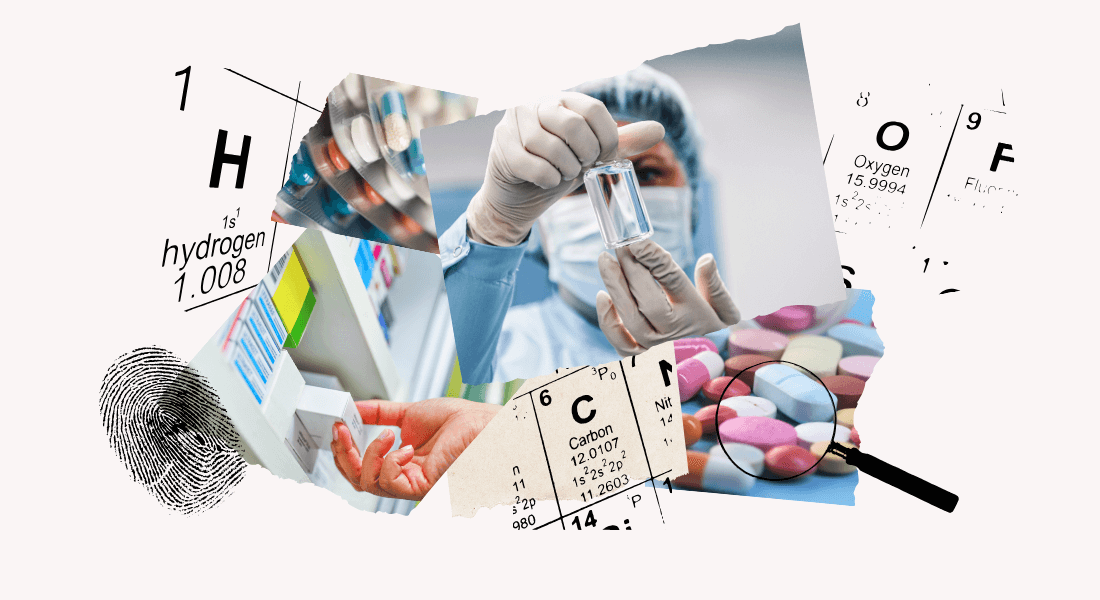Medicines have a unique chemical fingerprint, according to a new study from the University of Copenhagen. Researchers say this knowledge can be used to trace counterfeit or stolen medicine.

426,016. That's how many packages of illegal medicines EU agencies confiscated during an eight-month operation in 2024. During the operation, they managed to find counterfeit medicines worth 11.1 million euros. And it's an increasingly bigger problem. "Pharmaceutical crime is a growing threat in the EU," Europol stated earlier this year.
Fortunately, a new weapon against pharmaceutical counterfeiting may be on the way. Researchers from the University of Copenhagen and Stanford University have shown in a new study that it is possible to distinguish seemingly identical medicines at the molecular level - both across manufacturers in different countries and even from the same manufacturer.
All medicines have a unique chemical fingerprint that allows identification down to the specific factory where it was produced
The specific study examines the approved drug ibuprofen, but the underlying technology can be used to trace the origin of all types of medicine, according to the researchers.
"All medicines have a unique chemical fingerprint that allows identification down to the specific factory where it was produced," says Else Holmfred, Postdoc at the Department of Pharmacy at the University of Copenhagen and Stanford University, and lead author of the new study. She adds:
"Imagine a pharmaceutical company has a shipment of medicine stolen, which was discarded due to insufficient quality. Later, some criminals repackage the medicine with the intent to resell it. With this technology, it's possible to accurately determine where the medicine originally came from and thereby prove it was stolen."
Plants leave unique traces
In the study, researchers focus on variants of chemical elements - so-called isotopes - when identifying medicines and their origin: isotopes of carbon, hydrogen, and oxygen.
Atoms that consist of the same number of protons, but different numbers of neutrons are called isotopes. Isotopes are thus a variant of the same chemical element, where the only difference is the number of neutrons in the nucleus. Examples of isotopes include carbon-13, hydrogen-2, or oxygen-18.
In geology, isotopes are used to understand how the Earth's climate has evolved over time, and in food science to detect counterfeits of, for example, very expensive red wine or special olive oil.
Sources: University of Copenhagen and Else Holmfred
"Stable isotopes are incredibly useful because they don't change over thousands or millions of years. And since all medicines are made from synthesized organic substances or substances derived from plants, they always contain something organic and thus carbon, hydrogen, and oxygen. This could be, for example, corn starch or cellulose," says Stefan Stürup, Associate Professor at the Department of Pharmacy and co-author of the study.
The substances used in medicine are all produced under unique conditions, which affects their isotopic signature.
"The isotopic composition of a plant substance is determined by where in the world it comes from, what type of water it used, and what type of photosynthesis it performs. Depending on this, the ratio between carbon-12 and carbon-13 changes slightly. This ratio is unique to each plant. That's why it's impossible to fake isotopes," says Stefan Stürup.
Proving specific counterfeits
The next step in the research is to demonstrate that specific counterfeits can be found. Else Holmfred is investigating this in an upcoming study.
"The follow-up study hasn't been published yet, but I'm currently working with data where we can clearly see examples of counterfeit medicines. We can see that the counterfeit medicine has a significantly different isotopic signature than the medicine from the manufacturer. The tablets look almost identical, so it's hard to document that they're counterfeit unless you can chemically prove they're different," she says.
Such analyses of medicines are also relatively easy to implement. It just requires the right equipment.
"If you have a suitable laboratory and want to analyze 50 samples, it takes about 24 hours," says Else Holmfred.






